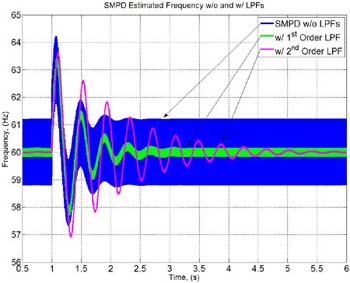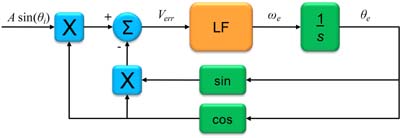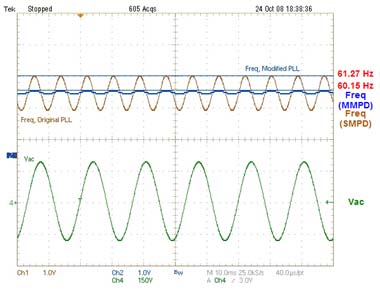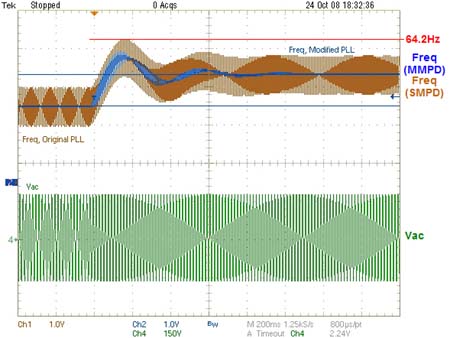RESEARCH
Improved Phase Detection for Single-Phase, Phase-Locked Loops

Common approaches to mitigate the 2ω ripple is to add Low-Pass-Filters (LPFs) to attenuate the noise ripple; these methods work, but cause unnecessary delays in parameter estimation, as seen in Fig. 1.
An improvement over this method would be to eliminate the need for LPFs altogether. Fig. 2 demonstrates how simple feedback of the estimated angle can be summed with the original Phase Detector output.
In this method, the 2nd harmonic term is completely eliminated under ideal conditions and results in as much as 88.2% ripple cancellation, as seen in Fig. 3.
This method also does not require the use of complex control schemes to improve performance; with a simple PI regulator the modified PLL system can achieve the same level of transient performance as the unmodified system, but without the noise ripple present, as seen in Fig. 4.

























































































